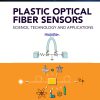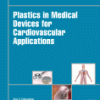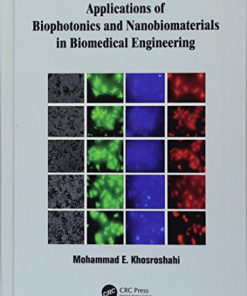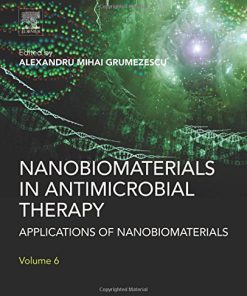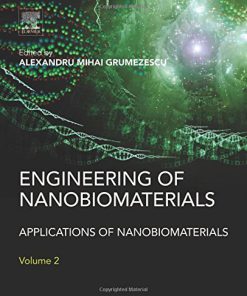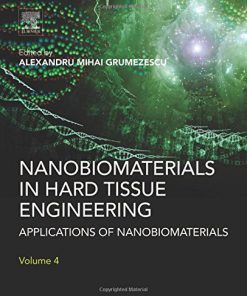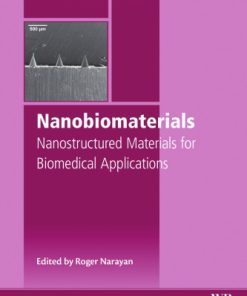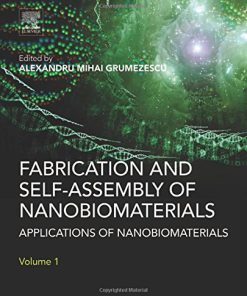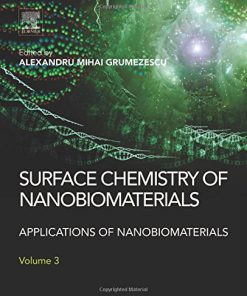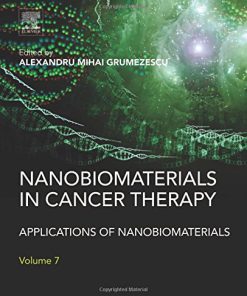Nanobiomaterials in Soft Tissue Engineering Applications of Nanobiomaterials Volume 5 1st Edition by Alexandru Mihai Grumezescu 0323428651 9780323428651
$50.00 Original price was: $50.00.$25.00Current price is: $25.00.
Nanobiomaterials in Soft Tissue Engineering. Applications of Nanobiomaterials Volume 5 1st Edition by Alexandru Mihai Grumezescu – Ebook PDF Instant Download/DeliveryISBN: 0323428651, 9780323428651
Full download Nanobiomaterials in Soft Tissue Engineering. Applications of Nanobiomaterials Volume 5 1st Edition after payment.
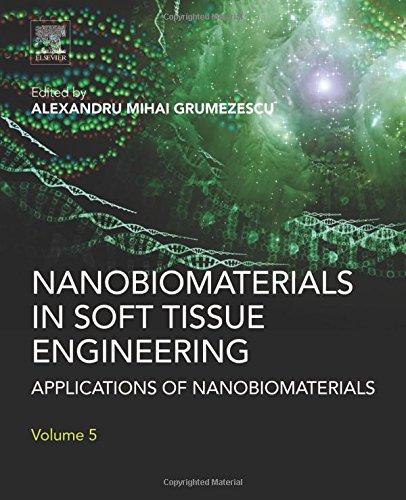
Product details:
ISBN-10 : 0323428651
ISBN-13 : 9780323428651
Author: Alexandru Mihai Grumezescu
Nanobiomaterials in Soft Tissue Engineering brings together recent developments and the latest approaches in the field of soft tissue engineering at the nanoscale, offering a new perspective on the evolution of current and future applications. Leading researchers from around the world present the latest research and share new insights.
This book covers the major conventional and unconventional fabrication methods of typical three-dimensional scaffolds used in regenerative medicine. Surface modification and spatial properties are included in an up-to-date overview, with the latest in vivo applications of engineered 3D scaffolds discussed. The book also considers the impact, advantages and future scope of the various methods.
This book will be of interest to postdoctoral researchers, professors and students engaged in the fields of materials science, biotechnology and applied chemistry. It will also be highly valuable to those working in industry, including pharmaceutics and biotechnology companies, medical researchers, biomedical engineers and advanced clinicians.
Nanobiomaterials in Soft Tissue Engineering. Applications of Nanobiomaterials Volume 5 1st Table of contents:
Chapter 1. Soft tissue engineering and microbial infections: Challenges and perspectives
Abstract
1.1 Introduction
1.2 Biomaterials Used in Soft Tissue Engineering
1.3 Biomaterial Microbial Colonization and Biofilm-Associated Infections
1.4 Antimicrobial Polymers Used in Soft Tissue Engineering
1.5 Conclusions
Acknowledgment
References
Chapter 2. Nanotechnology approaches for skin wound regeneration using drug-delivery systems
Abstract
2.1 Introduction
2.2 Cutaneous Wound Healing and Skin Lesions
2.3 Therapeutic Agents for Wound-Healing Therapy
2.4 Nanotechnology Approaches for the Release of Therapeutic Agents for Wound Healing
2.5 Conclusions
References
Chapter 3. Bacterial cellulose for advanced medical materials
Abstract
List of Abbreviations
3.1 Introduction
3.2 Bacterial Cellulose
3.3 Fermentative Changes: New Biocomposites
3.4 Medical Applications of Bacterial Cellulose
3.5 GTR Membranes
3.6 Another Application: Drug Delivery
3.7 Future Materials—Genetic Modifications
3.8 Conclusions
References
Chapter 4. Applications of nanobiopolymers for soft tissue engineering
Abstract
4.1 Introduction
4.2 Nanobiopolymers for Neural Tissue Engineering
4.3 Nanobiopolymers for Cardiovascular Tissue Engineering
4.4 Nanobiopolymers for Cartilage and Ligament TE
4.5 Nanobiopolymers for Skin TE
4.6 Conclusions and Future Perspectives
Acknowledgments
References
Chapter 5. Machine design for multimaterial processing
Abstract
5.1 Introduction
5.2 The Role of the Scaffolds in TE: Design Features
5.3 RP of 3D Scaffolds
5.4 Device Design
5.5 Dimensional Analysis of the Maryland Manipulator for a Given Workspace
5.6 Inverse Kinematic Model of the Maryland Manipulator
5.7 Jacobian Matrix Generation
5.8 Dynamics Modeling with Principle of Virtual Works
5.9 Results of Device Design
5.10 Scaffold Fabrication
5.11 Conclusions
References
Chapter 6. Advanced nanobiomaterials in tissue engineering: Synthesis, properties, and applications
Abstract
6.1 Introduction
6.2 Natural and Synthetic Biopolymers for Tissue Engineering
6.3 Poly-Lactic Acid
6.4 Design and Fabrication of Scaffolds
6.5 Processing Methods for Nanocomposites in Tissue Engineering
6.6 Conclusions
References
Chapter 7. Collagen-based nanobiomaterials: Challenges in soft tissue engineering
Abstract
7.1 Introduction
7.2 General Description and Origin
7.3 Collagen Structure
7.4 Collagen Types
7.5 Collagen Extraction Methods
7.6 Collagen Sources
7.7 Biomedical Applications of Collagen in Soft Tissue Engineering
7.8 Conclusions and Perspectives
References
Chapter 8. Micro/nanofiber-based scaffolds for soft tissue engineering applications: Potential and current challenges
Abstract
8.1 Introduction
8.2 Electrospinning as a Versatile Processing Technique for Scaffolding
8.3 Electrospun Structures for Tissue Engineering Applications
8.4 Soft Tissue Engineering Applications
8.5 Concluding Remarks and Future Directions
Acknowledgments
References
Chapter 9. Natural polymer-based hydrogels as scaffolds for tissue engineering
Abstract
9.1 Introduction
9.2 Tissue Engineering
9.3 Natural Polymers for Hydrogel Scaffolds in Tissue Engineering
9.4 Hydrogel Scaffolds
9.5 Classification of Hydrogels
9.6 Method of Fabricating Hydrogels
9.7 Scaffold Fabrication Methods
9.8 Currently Applied Three-Dimensional Scaffold Fabrication Technologies
9.9 Characterization of Hydrogel Scaffold
9.10 In Vitro Drug Release
9.11 Applications of Hydrogels
9.12 Other Scaffolds
9.13 Future Perspectives
Acknowledgments
References
Chapter 10. Bioactive nanomaterials for cartilage and muscle regeneration
Abstract
10.1 Cartilage Tissue
10.2 Muscle Tissue
10.3 Conclusions
Acknowledgments
References
Chapter 11. Fabrication of complex biomaterial scaffolds for soft tissue engineering by electrospinning
Abstract
11.1 Introduction
11.2 Electrospinning of Fibrous Scaffolds
11.3 Influence of Architecture of Microfiber Meshes on Cell Behavior
11.4 Surface Modification
11.5 Complex Scaffolds
11.6 Limitations with Electrospinning and Future Opportunities
References
Chapter 12. Oxygen-generating nanobiomaterials for the treatment of diabetes: A tissue engineering approach
Abstract
List of Abbreviations
12.1 Introduction
12.2 Tissue Engineering
12.3 Diabetes
12.4 Therapeutic Approaches
12.5 Conclusions
References
Chapter 13. Advances in the field of soft tissue engineering: From pure regenerative to integrative solutions
Abstract
13.1 Soft Tissue Engineering
13.2 Conclusions and Perspectives
Acknowledgments
References
Chapter 14. Tissue engineering: Use of electrospinning technique for recreating physiological functions
Abstract
List of Abbreviations
14.1 Introduction
14.2 Tissue Engineering
14.3 Application of Tissue Engineering in Artificial Organs
14.4 Challenges in Tissue Engineering
14.5 The Future
References
Chapter 15. In vivo microscopic and mechanical characteristics of bioengineered and biodegradable tissue scaffolds and nanomaterials
Abstract
15.1 Introduction
15.2 Wound Healing
15.3 Angiogenesis
15.4 Biomaterials Used in Wound Healing
15.5 Animal Models
15.6 In Vivo Microscopic and Mechanical Characterization of Biomaterials
15.7 Testing and Assessment of Degradation
15.8 Conclusions
People also search for Nanobiomaterials in Soft Tissue Engineering. Applications of Nanobiomaterials Volume 5 1st:
nanotechnology tissue engineering
nanomaterials engineering
nanomaterials in tissue engineering
application of nanotechnology in materials science
soft biomaterials
Tags: Nanobiomaterials, Soft Tissue, Engineering, Applications, Nanobiomaterials, Alexandru Mihai Grumezescu
You may also like…
Science (General)
Technique - Food Manufacturing


